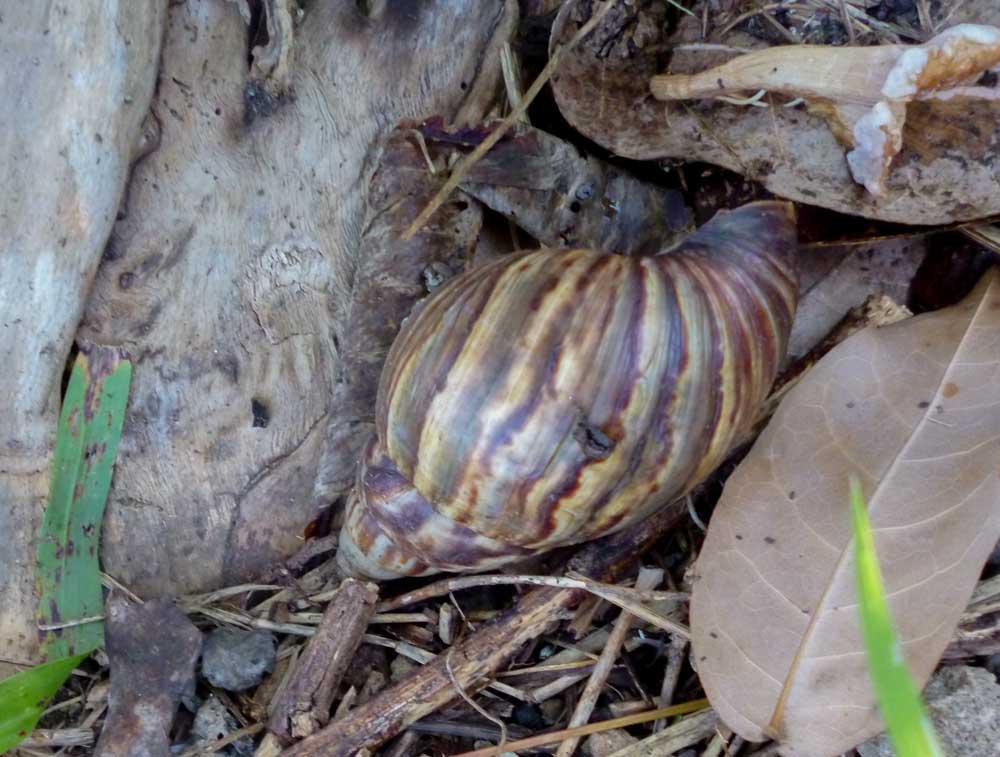The Giant African Snail, an Alien in Cuba
By Esther Zoza

HAVANA TIMES – The giant African snail is still making headlines in Cuba. It was first sighted back in 2014, in the Arroyo Naranjo municipality in Havana. Some people say that the size and shape of its shell are the real reasons it made its way to Cuba.
If Cubans like doing anything, it’s collecting things. Bearing this in mind, it isn’t at all strange that some of our fellow Cubans collect snails, both from the sea and land.
Generous Nature on our island has presented us with a wide range of molluscs, especially polymaths: the most nuanced snails, and the ones our children are familiar with. Add to that the fact that land snails have different and beautiful shape shells, which make them extremely attractive, desireable and lucractive.
One of the possible reasons for the arrival of the giant African snail in Cuba involves the possibility that a worshipper of African deities carried it in their suitcase, in response to one of the most varied legends.
Some people even claim that a businessman in the restaurant or cafe sector, saw its potential as a tasty delicacy, while others say that it would have made good business in the decoration or religious markets.
But, the one thing we can’t deny is that these macaronic aliens have not only invaded our crops, fields, gardens and patios, but we can also find them on sidewalks and stairwells, even in front of our front door.
They have spread to such a great extent that the Government finds itself forced to take matters into its own hands, creating groups to reduce and control the danger it poses. They are definitely working hard. Newspapers, radio and the TV are constantly talking about characteristics of this invasive species and telling us all the different ways to get rid of them.
People clear parks and barren dilapidated tenements near their homes, finding them and burying them, but… how can we verify they aren’t anywhere near the vegetables and fruit the population eats? How can we ensure that the different places our children play in are safe from their macabre trail? How can we assume that our people will take the necessary hygiene precautions when they are elbow-deep in so many daily emergencies?
We need to make it clear that this mollusc not only poses a danger to human health because it is a host for a nematode that produces an infection in the brain, known as Eosinophilic meningitis, but it is also dangerous for other molluscs.
Most people who take part in sourcing them out and exterminating them, are unaware of the shape of its shell in the initial stages, and go after other species of snails, which are smaller and live in gardens and sometimes wander onto sidewalks.
I have not only seen people walking around the neighborhood looking where they step for fear of becoming infected, but I have also seen small children stepping on them, not distinguishing between one species and another.
It is said that Cuba is where the most species and classes of land molluscs live in the world. Will we also be the first place in the world to contribute towards their extinction?
